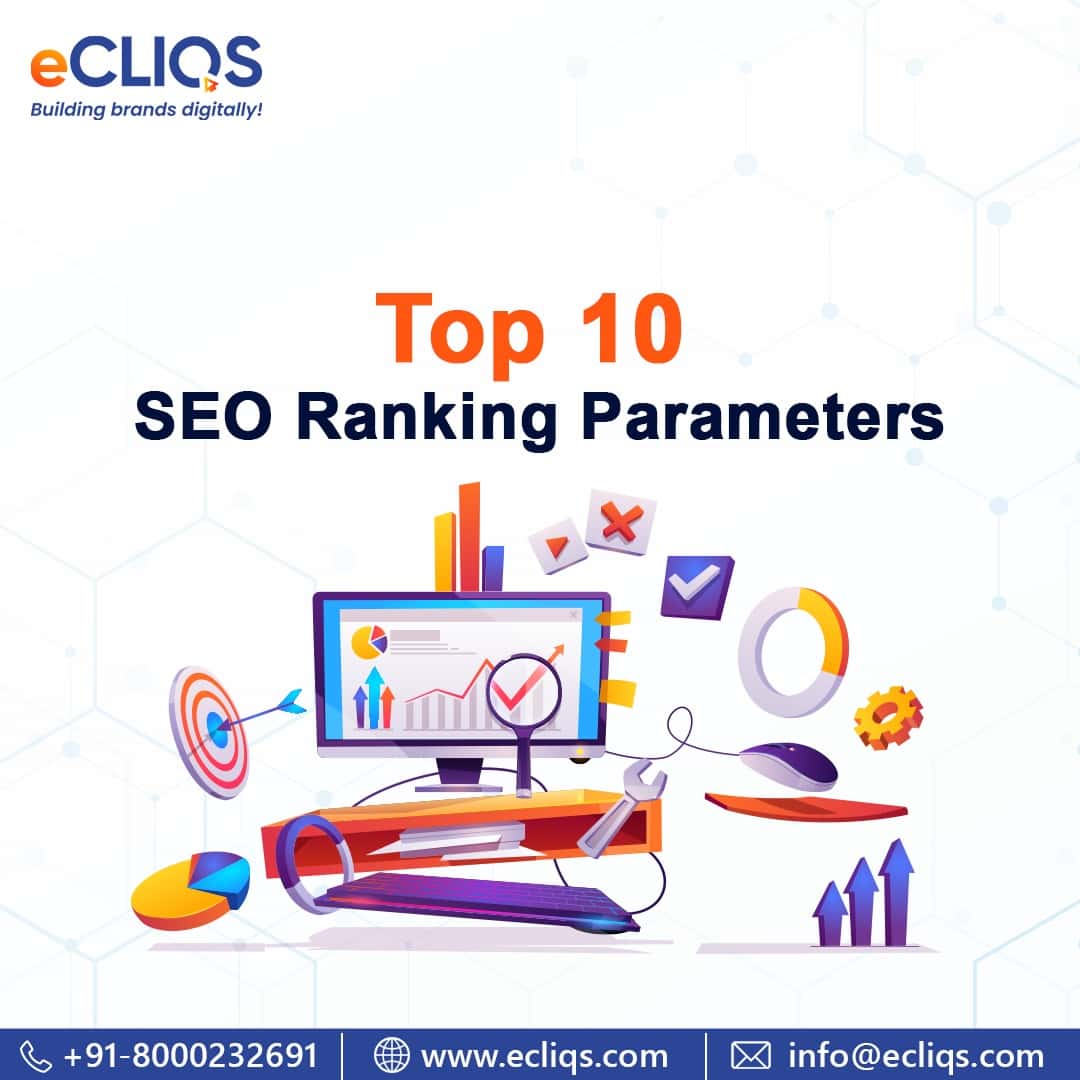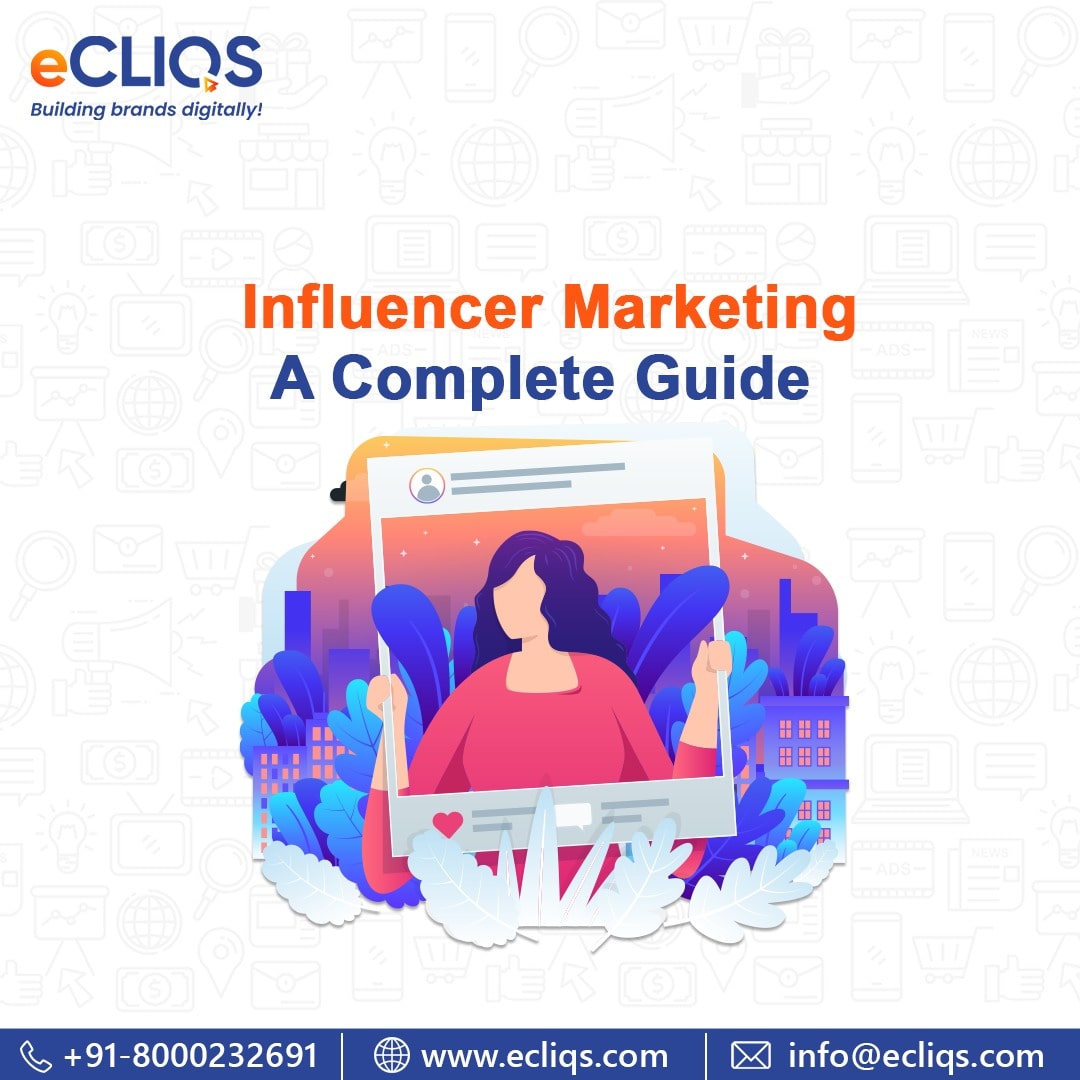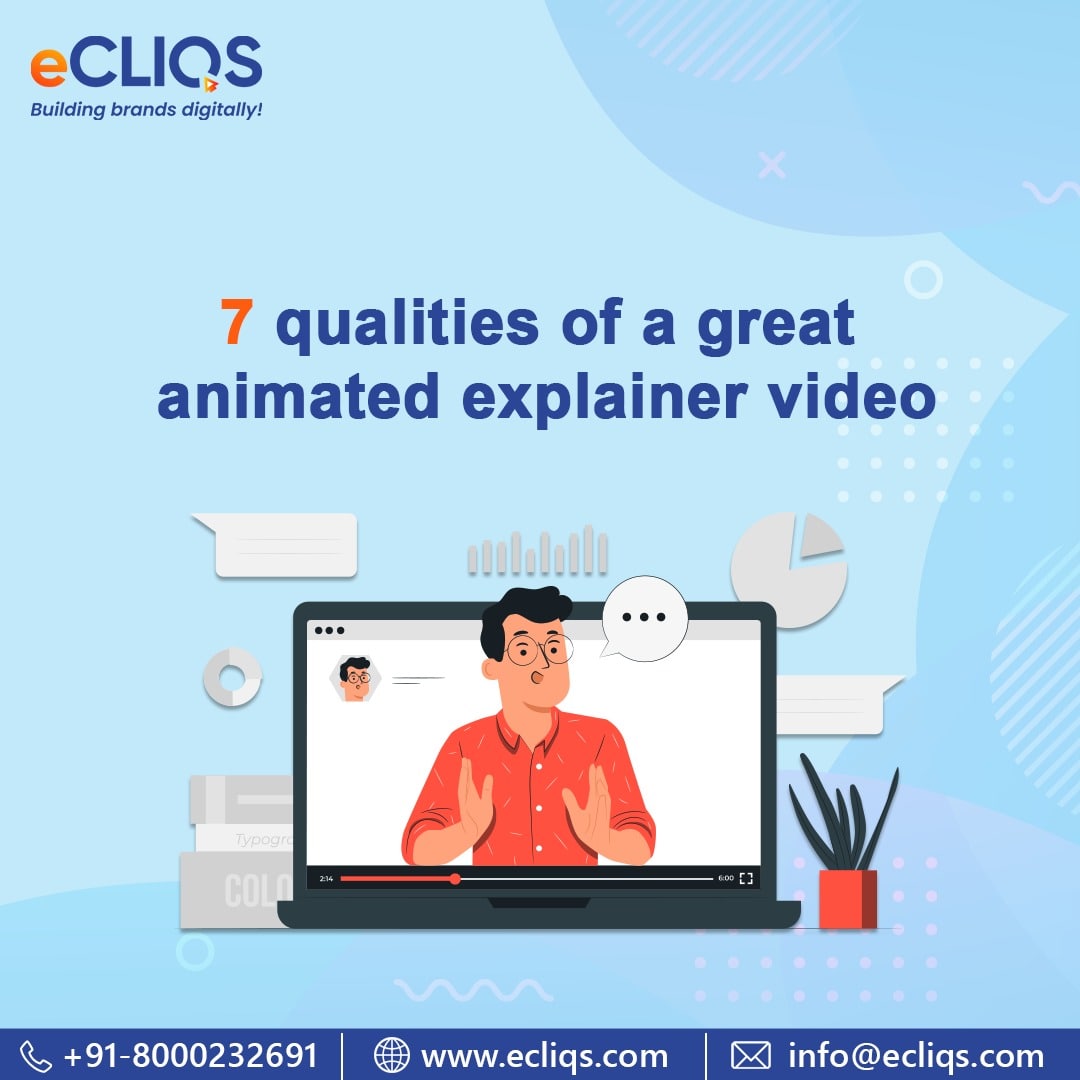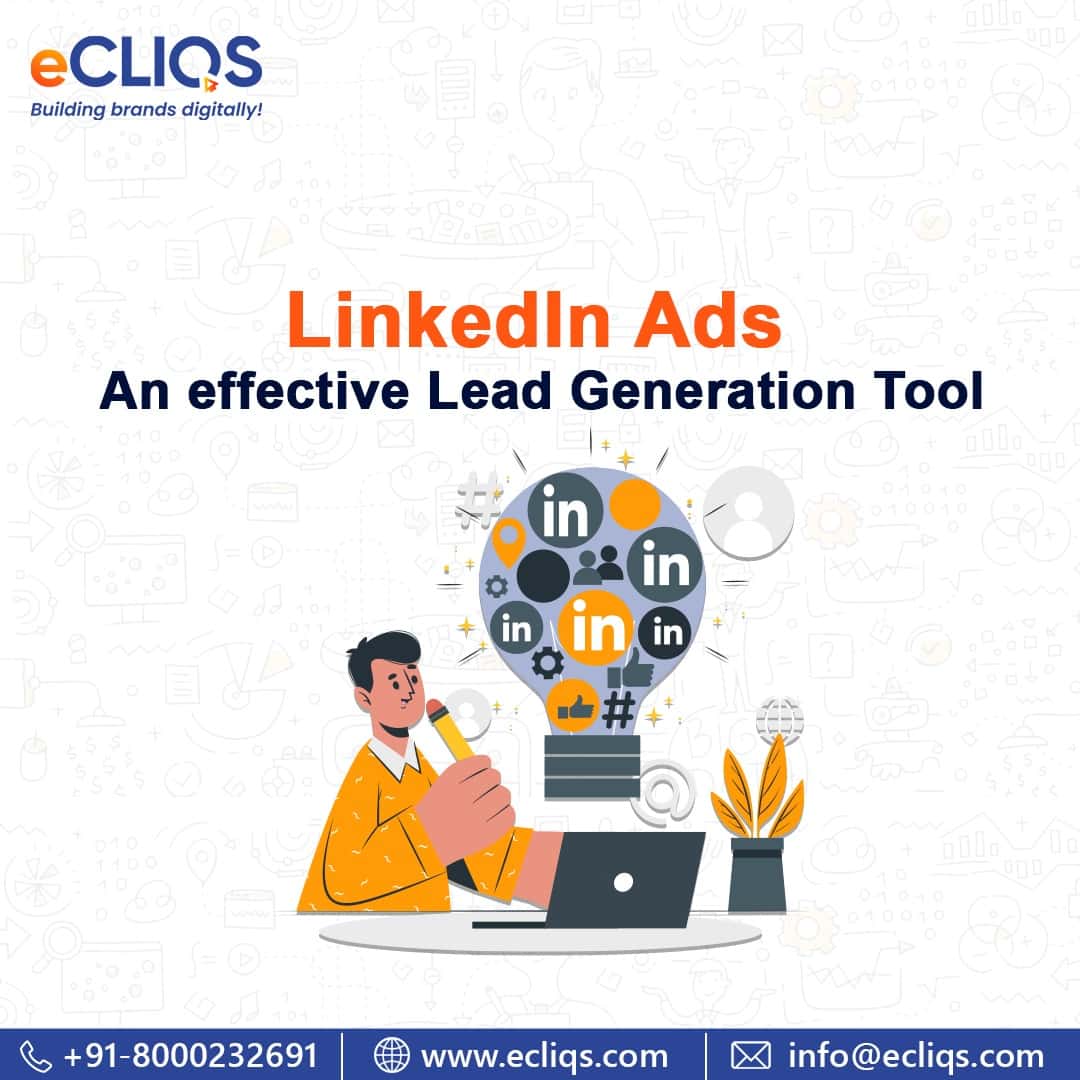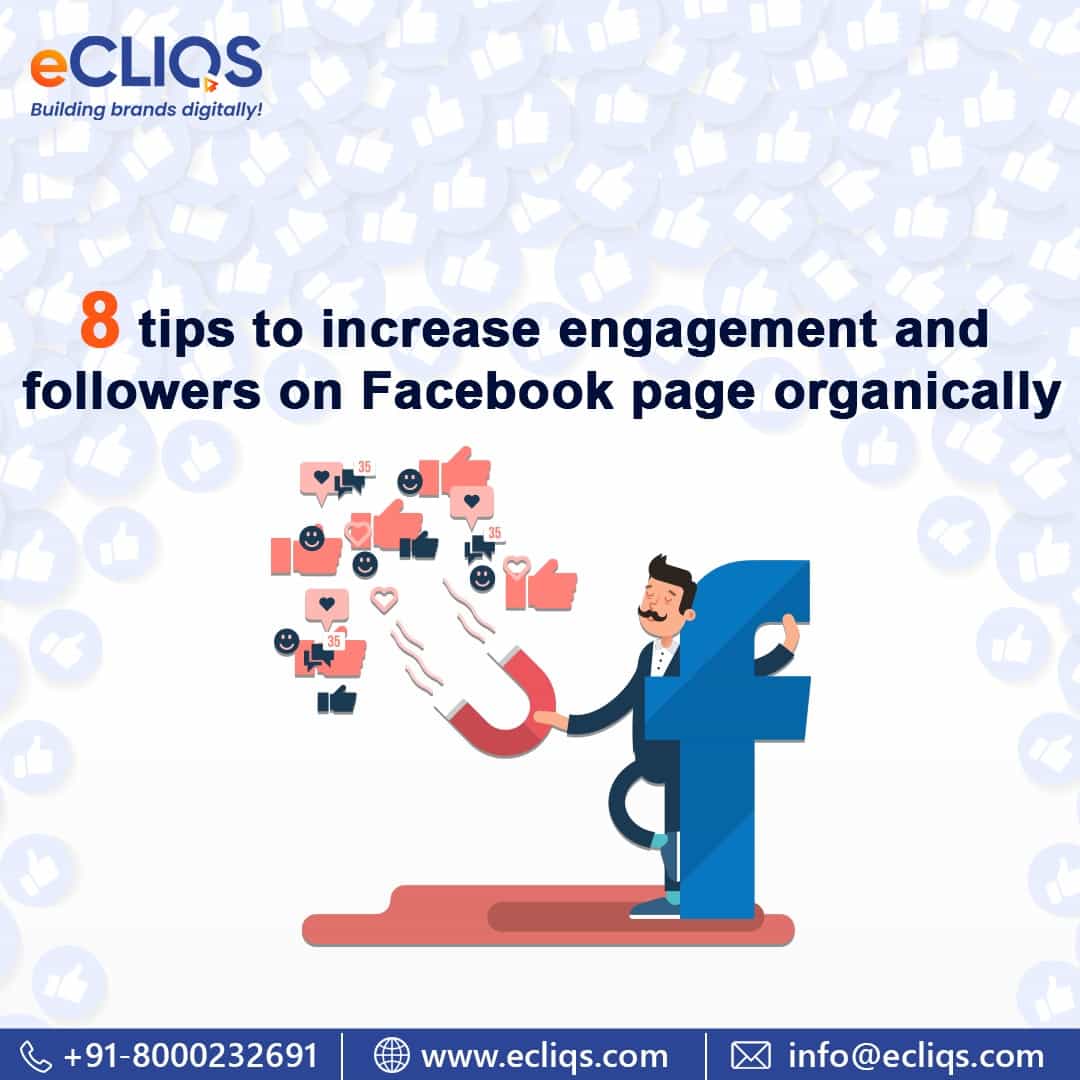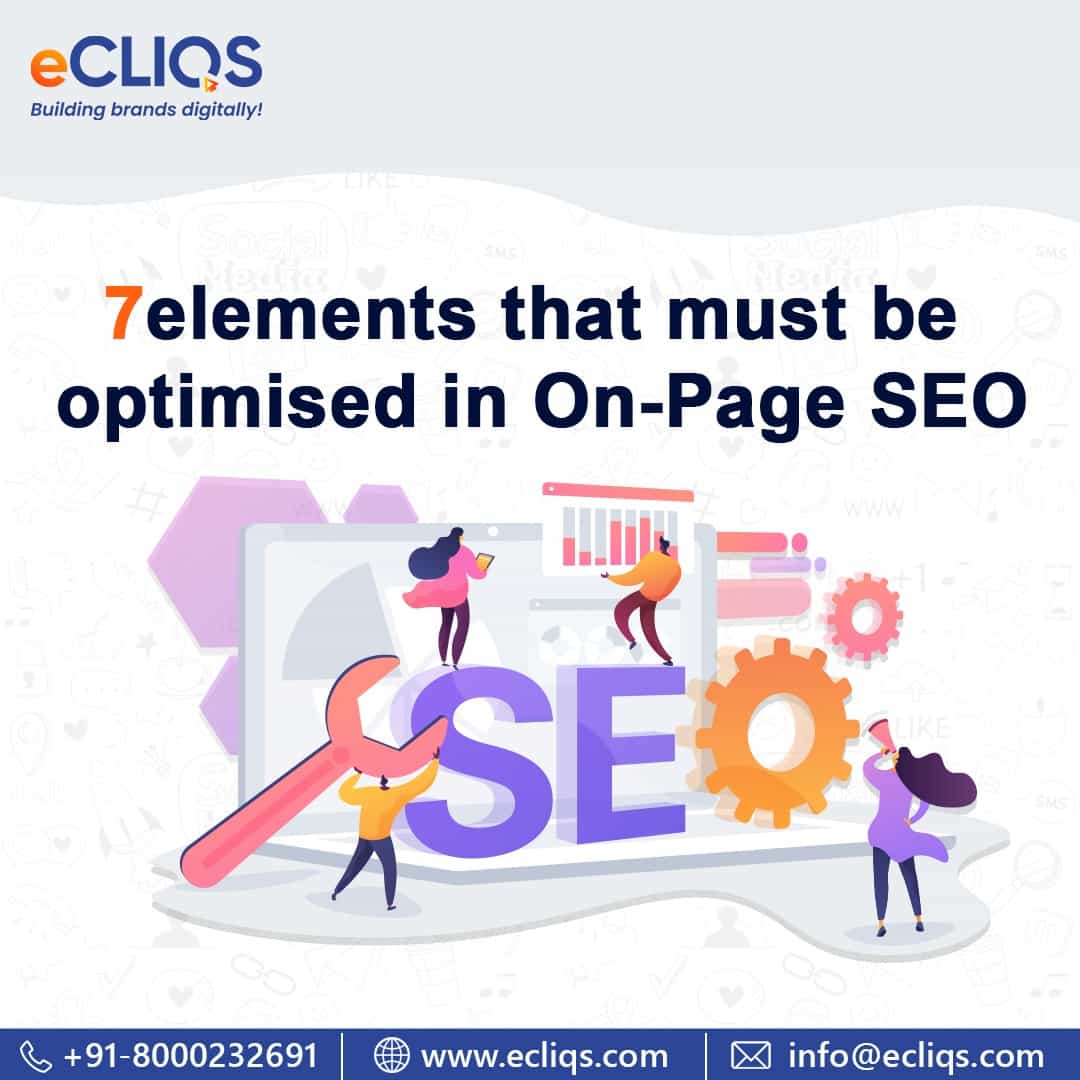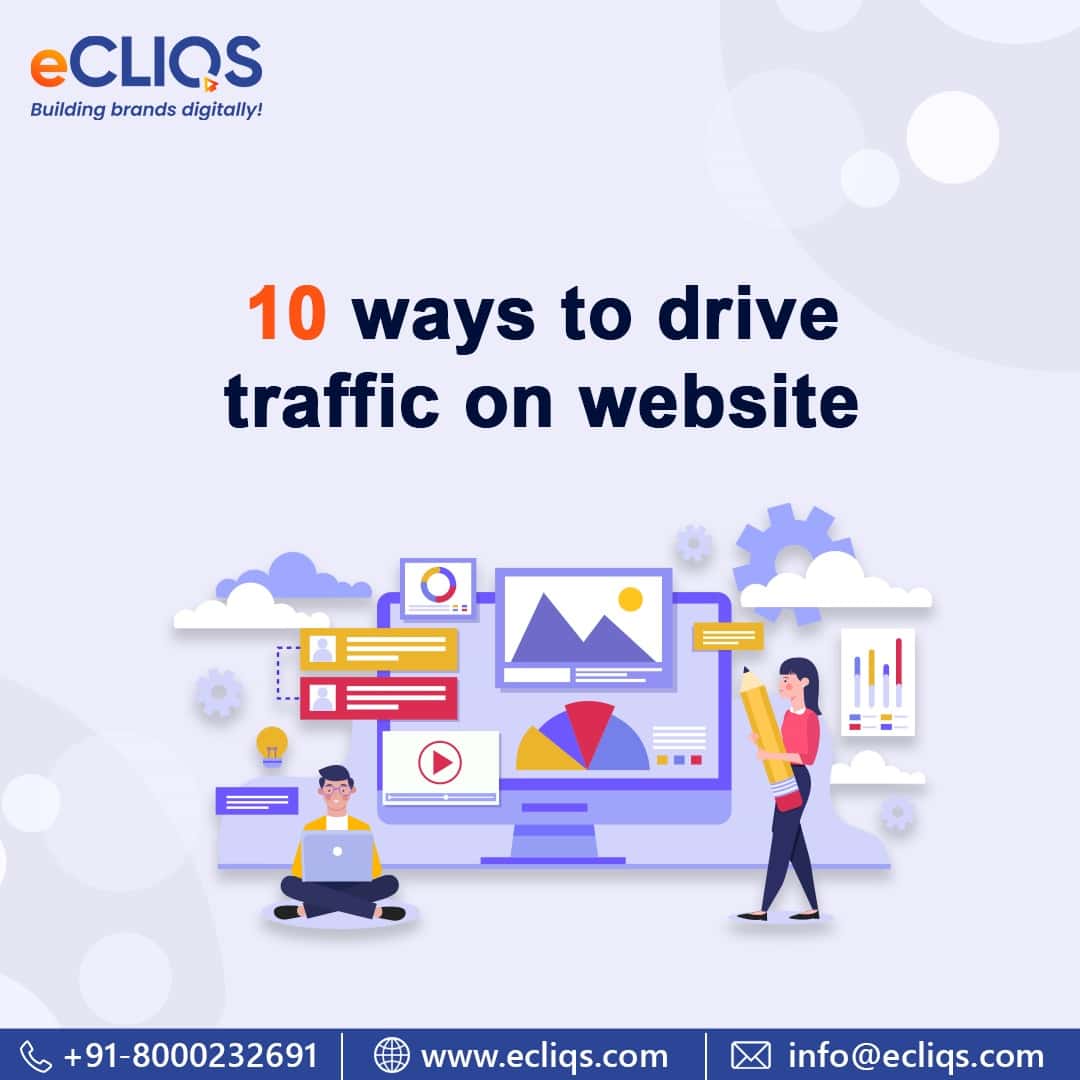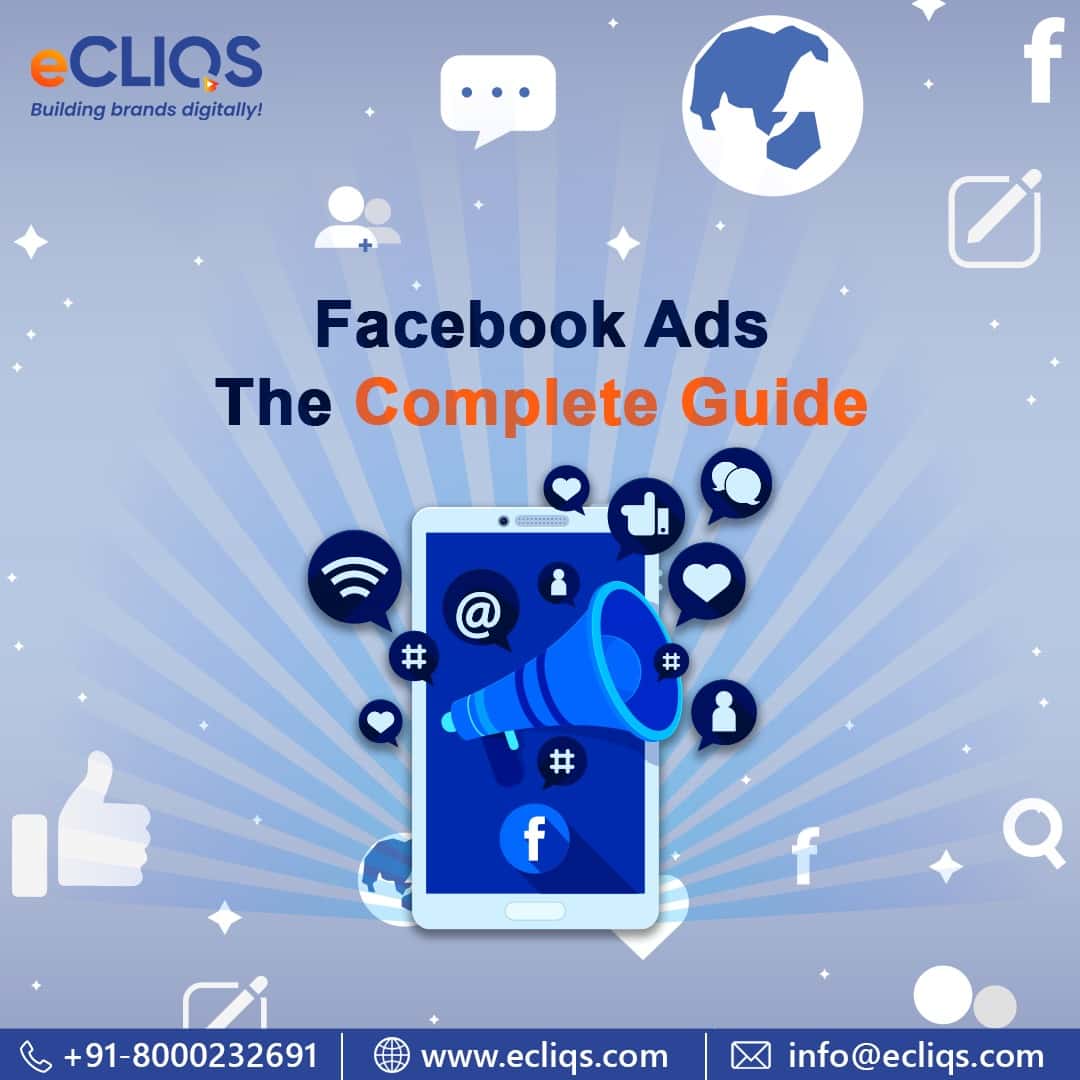Top 10 SEO Ranking Parameters
SEO criteria are always evolving, and it may be difficult to stay on top of the most recent advances. However, if you want to see your Google rankings rise from the bottom of the list to the top of the list, you must be informed.
Sites that are well-optimized attract an increasing amount of visitors over time, resulting in an increase in leads and revenue. Searchers will not be able to locate your website if you do not optimise it, and all of your efforts will be for nothing.
Understanding SEO
Many individuals are perplexed as to how Google’s rankings operate. So, before we go into the specific search engine ranking elements, let’s start by addressing some of the most often asked questions concerning search engine optimization (SEO).
What Is “Ranking” in SEO?
As you may be aware, SEO is an abbreviation for search engine optimization, and it simply refers to the process of making web pages more likely to appear in search results. But, let’s be honest, at this point, “Google” is basically all that comes to mind.
And, more specifically, how does it work? Let’s take it step by step.
In search engine optimization, ranking refers to the position of your content on the search engine results pages (SERPs). When your website is ranked #1, it implies that when people search for a certain phrase, your website is the first result they see.
Making it into the top three results is good since your click-through rates increase exponentially the closer you get to number one.
How to Monitor Search Engine Rankings
Before you can begin to enhance your SEO rating, you must first determine where you now stand.
There are a handful of different approaches to locating this information. For starters, you might do a Google search using the phrases you believe your consumers would be searching for. Use an incognito or private window in your browser to ensure that Google’s customization does not affect your search results. Take a look at where your material appears.
However, for bigger sites with hundreds of pages, this is a bit unrealistic, and you’ll most likely want to use a tool to assist you.
Here is a list of top 10 SEO ranking factors:
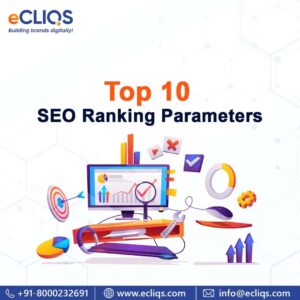
#1. A safe and easy to access Website
It should come as no surprise that the first of our SEO ranking considerations has to do with having the appropriate kind of URL. To be more specific, it’s a URL that Google’s bots can readily access and crawl through.
Google must be able to visit the URL and look at the page content in order to determine what the website is about, in other words. You’ll require the following things to assist the bots:
- A website built using a well-coded website builder is a professional-looking website.
- A robots.txt file is a text file that instructs Google where it may and cannot search for content on your website.
- A sitemap that contains a list of all of your pages.
#2. Page Speed (Both Mobile and Web Page Speed)
Speed is a long-standing ranking element in search engine optimization (SEO). Providing web pages that load quickly is a way for Google to enhance the experience of its users on the internet.
After announcing an algorithm update that prioritised mobile page performance, Google rolled out the change in July 2018. Google may penalise your site if it doesn’t load quickly on mobile devices.
Use Google’s mobile testing tool to find out how your site compares to others.
#3. Mobile Friendliness
It’s important to keep in mind that mobile-friendliness is an important SEO ranking criteria. One of the reasons why Google has made modifications to its search results is because more people use mobile devices than desktop computers to access the internet.
A mobile-first index indicates that Google’s search results now come from mobile-optimized sites rather than desktop-optimized sites. Mobile-optimized sites have a better chance of ranking well than those that aren’t.
For a strong search engine rating, you’ll need to pay attention to many of the SEO ranking elements we’ll discuss in this post. But don’t forget about user experience when users come on your site, as well.
Things to look at include whether you:
- Have a website that automatically adapts to the screen size of the device it is being viewed on.
- Use big fonts for easy readability on a small mobile screen.
- Ensure that your site is simple to use by including accessible menus..
- Make sure that adverts don’t obscure important information.
If you have the resources, the time, and the inclination, Google AMP may be a good option for you (accelerated mobile pages). As a result, your mobile visitors will be able to access all of your content quickly. According to some reports, AMP-enabled webpages appear higher in Google’s search results than non-AMP versions.
The drawback is that you’ll have to rewrite your site to conform to AMP’s rules. Then comes the maintenance phase. Obviously, this is a time-consuming undertaking.
Regardless of whether you use Google AMP or not, you must make certain that your site is mobile-friendly at all times.
#4. Domain Age, URL, and Authority
What if We told you that 60% of the top 10 Google search ranking sites are at least three years old? According to an Ahrefs analysis of two million pages, only a small percentage of newly launched websites obtain this position.
So if you’ve been running your website for some time and have followed the advice in this post, you’re already ahead of the game.
The domain name is important in several instances. There are spammy sites with minimal content that have been punished by Google for using exact-match domains (those that include their target keyword in the URL).
By using exact-match domains, websites that are considered to be of high quality, value, and relevance might notice a rise in their search engine rankings. However, if your firm already has a website, you don’t need to hunt for a domain name that is an identical match to yours.
#5. Optimized Content
In this tutorial to Google SEO ranking criteria, we’ve spoken a lot about content. The reason for this is because it’s one of the most essential ranking variables for search engines (along with user experience, links, and RankBrain).
Now, let’s get down to the nitty gritty of what SEO content optimization entails.
Keywords play an important role in Google’s search algorithm, as shown in our guide to keyword research. A searcher uses these terms and phrases when seeking for information. – Google In addition, the words and phrases you use to describe the subject matter of your website fall under this category.
Ideally, they’ll be the same. You can’t have a strong online presence without including relevant keywords.
Duplicate material has a detrimental impact on SEO rankings. When it comes to search engine optimization (SEO), fresh, unique material is always the greatest option. Using canonical URLs, you can tell Google which of your material is the most authoritative.
#6. Technical SEO
One part of content optimization for higher search engine results is to get the coding correct, as previously stated. Intimidating for those who aren’t tech-savvy and prefer to write rather than learn how to code.
Even if you’re not a developer, you can manage some of the following components of the system:
- The first place Google looks to establish the relevance of a piece of material is in the title of the page.
- Start with your title at h1 and then use h2 or h3 for subheadings, if necessary.
- Use your keyword phrase in your meta description to captivate readers.
- Around 160 characters is the ideal length for meta descriptions, so keep them concise.
- For visually challenged visitors, use keyword words in image alt tags to demonstrate how the pictures are related to the primary content of your site.
- Make it clear to Google what your content is by using schema markup.
#7. User Experience
Google has been employing artificial intelligence to improve the ranking of web sites for a time now. This signal is referred to be RankBrain. In addition to ranking factors, this contains various signals that are used by the search engines. These are some examples:
- Click-through rate: searchers who go to your site as a result of finding an entry via a search engine
- Bounce rate (especially pogo-sticking): the percentage of visitors that land on your website only to rapidly click away and return to the search results.
- Dwell time: a measure of the time spent by visitors after they first arrive at your website.
#8. Links are a crucial SEO ranking signal.
The following are the three types of links to consider:
- Inbound links
- Outbound links
- Internal links
Inbound Links
One factor that Google considers when determining the authority and relevance of your content is the number of incoming links you get.
Ideally, an authoritative site would provide a link to your site in a relevant piece of their own material. Your content marketing resource will be seen more favourably than if a low-quality site connects to it, since the Content Marketing Institute is considered to be an authority in the field.
Inbound links are sometimes referred to as “backlinks” while discussing SEO. You want as many high-ranking websites to link back to yours as possible. Inbound links from low-quality websites should be kept to a minimum.
A service like SEMrush or one of the keyword research tools may help you discover your incoming links.
Outbound Links
At the same time, you want to demonstrate to your visitors that you’re putting out high-quality material. You may do this by connecting to other related, well-known websites in your area.
So does this indicate that you should just flood your site with connections to other websites in order to get authority? The answer is a resounding nay.
If you’re looking for information, you should only choose trustworthy sites with high domain authority. In all honesty, you should be doing this anyhow for the benefit of your consumers to guarantee that you deliver the maximum value.
Internal Links
Linking to your own content may assist Google and your visitors connect your sites, making them more value to both parties. Your site’s visitors will be more likely to click through to a related page if you link to it from an authoritative page.
This aids the second page’s rise in the search results.
#9. Social Media
Another evidence that your material is noteworthy is when people share it on social media. Using 23 million shares, Cognitive SEO showed a clear correlation between social shares and search engine rankings.
According to Google’s official statement, social shares have no impact on search engine rankings. Social media links are not counted the same as links from high-ranking websites like Wikipedia.
Even said, the most popular sites in Google search results almost always have a large number of shares. Though this may be due to a number of variables, including:
- Increasing the number of social media shares increases the amount of visitors to the page.
- Your work is more likely to get backlinks if it has a higher number of shares.
Even so, having more social shares may have an impact on your SEO results, even if just in an indirect way.
#10. Real Business Information
This last point is critical for firms who are specifically targeting a certain geographic region. One of the most important local SEO ranking variables is whether or not a company’s information is available online.
It is important to look after areas like:
- NAP (name, address, phone number)
- Business listings on Google My Business and Facebook
- Correct local search terms
Conclusion
There’s no such thing as a magic bullet when it comes to actual SEO. The most essential thing to remember is that it takes time to get to the top of the search results. No matter how well you optimise your website today for various ranking aspects, it won’t be at the top of search results tomorrow. Maintaining a high level of relevance for your audience is a constant part of the optimization process. In order to expand naturally, you must have a working and optimised website.
References
A Guide to Different Types of Website – Static, Dynamic, Ecommerce
With over 1.7 billion websites present, providing different styles, formats, and functions, choosing the right website for your business becomes a little confusing.
As a business owner, you need to be aware of all the different kinds of present websites. Analysing what the competitors use and conducting tests allows you to choose the right type of website.
We have created this guide for you to make it easy to understand different types of websites. This guide covers types of websites along with their pros and cons. You can choose the right type of website that suits you.
Types of websites

1. Static website
These websites are the most basic ones and are the easiest to create. You don’t need a database or any web programming for making these types of websites. You just need to create a few HTML pages and publish them on a webserver to create these types of websites.
These websites have a fixed code, and the web content does not change unless updated manually by the webmaster. While it works well for small websites, large websites with huge amounts of traffic may be difficult to maintain. Therefore larger websites use dynamic pages.
Pros
- Cost-effective
These websites are cheap to develop. For a startup having a shoestring budget, these come across as the most suitable option. You can get a dedicated server for cheap prices for static websites.
- Time-saving
Static websites can be developed quickly. These websites can be developed in a much shorter span of time when compared to dynamic websites.
- Easy indexing
Search engines can easily index these types of websites
- Quick transferring
These types of websites do not have a complex structure like dynamic websites and can be easily transferred to clients without a lengthy process.
Cons
- Limited functionality
These types of websites don’t offer wide functionalities that a dynamic website is capable of. These types of websites cannot perform any other functions except for adding images, videos, hyperlinks, and texts.
- Difficult to update
The HTML files need to be changed individually for making changes and updates.
- Not suitable for a long run
Businesses continuously need to make changes to the website for the latest information and updates. If they use a static website it will become very difficult for them to do so.Therefore, in the long run, businesses opt for dynamic websites.
2. Dynamic websites
Dynamic websites are types of websites that can display different types of content every time the user views them. It changes the display depending on various factors like time of day, viewer demographics, location, language settings, etc.
Unlike static websites, dynamic websites don’t need manual updates. Dynamic websites use client-side scripting and server-side scripting to do so. Both these scripts help in reducing the server’s load time.
Pros
- Easy to update
The primary advantage of these types of websites is they are easy to update. Analytical research is not required for making updates.
- Interactive
These websites are interactive. The visitor gets a quick response on these websites. And this website changes according to the user’s behavior.
- Sleek navigation
Dynamic websites enable the user to move around easily. It makes the transition from one page to another quick and easy for the user.
Cons
- Expensive
The development of these types of websites is a little expensive. Cost is high for hosting as well.
- Slow loading
These websites have to perform different functions with complex technologies, therefore they load much slower than static websites.
3. E-commerce Websites
These types of websites allow the user to buy and sell goods, services, and digital products. Using an e-commerce website, a business can process orders, get paid, provide customer tracking, manage logistics. E- commerce websites can be of different types depending on your business.
There are B2B E-Commerce websites, where the trade happens between businesses. B2C E-Commerce websites let businesses trade with direct consumers. Other types include C2C, C2B, C2A, B2A.
Pros
- Selling internationally
New brands can reach customers internationally using e-commerce websites. You get the option to buy and sell products worldwide. It lets you develop your brand quicker.
- Personalised experience
You can offer personalised experience to your customers through e-commerce websites. Personalization of websites can boost sales. You can run various campaigns to attract more customers.
- Low cost of financing
To start an ecommerce business you don’t need a huge amount of funds. You can start a website and start selling products immediately.
Cons
- E-commerce is highly competitive
The number of e-commerce websites has increased a lot in recent years. The market has become competitive. You need aggressive marketing in order to sustain in the market.
- Website crash
The biggest disadvantage of e-commerce is when there is a large number of visitors present on a website, there are chances that the website may collapse. And when the website crashes the business stops. There is no business till the website is live again.
- Security issues
Malicious hackers often steal customer’s informations from these websites. E-commerce websites need constant security checks in order to keep consumer data safe.
Outlook
Depending on the nature of a business there are different types of websites available. You need to thoroughly analyse all kinds of websites and decide which website suits your business the most. If you are a startup having a low budget, you can develop a static website. If you want a more personalised website you can go for dynamic ones. E-commerce websites can get you access to a wide variety of customers.
References
- https://www.koolstories.com/ecommerce-website-pros-cons
- https://sundewsolutions.com/blog/static-vs-dynamic-website-pros-and-cons-detailed-comparisons
- https://www.spiralytics.com/blog/what-are-dynamic-websites/
- https://www.google.com/amp/s/99designs.com/blog/web-digital/types-of-websites/amp/
Influencer marketing – A Complete Guide
According to The shelf, 92% of customers go with the recommendation from other people. Consumers trust recommendation over promotional content that comes directly from companies.
In the recent years, we all have seen how the use of social media has increased. Popular platforms like Facebook, Twitter and Instagram now have a large user base and are reaching big parts of the world.
Nowadays, these platforms are used by brands also to interact and promote their products and services. Brands willing to increase awareness actively use these social media platforms
Influencers have a huge following on these platforms and their audience trust them. Most influencers try to build a personal connection with their audience. And when these influencers promote a certain product, their audience automatically starts trusting that particular product.
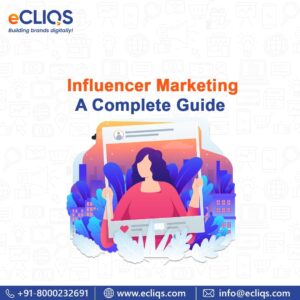
Let’s understand what influencer marketing is
If you are active on social media, you must have come across a influencer talking about a product. That’s exactly what influencer marketing is.
Influencer marketing is one type of marketing, where brands and influencers collaborate in a campaign in order to expand the reach of that particular campaign. These influencers don’t necessarily have to be celebrities.
Beauty blogger, travel vlogger, food blogger, etc. they can be anyone.
Influencer marketing, at its finest, won’t even feel like marketing. It is much more impactful than traditional advertising. With the right influencer marketing strategy, you can popularise any product or service that you want. To make your influencer marketing campaigns successful, here are a few key points to look for.
Know your target audience.
For any influencer marketing campaign to be successful, it has to reach the right audience. A target audience analysis will not only help you in product development, but will also help you market your products in front of the right people.
You will need to understand what you are, what you are offering, and what you want to achieve. Once you have identified these things, it will be easier for you to understand your target audience.
Finding the right influencer
Finding the right influencer for your influencer marketing campaign is important. Every influencer has their own audience, you need to figure out whose audience can be your potential customer. If you are a cosmetics company, you need to identify a promotes or talk about beauty tips, products etc.
With the right influencer rolled in for your influencer marketing campaign, you can surely achieve your desired goals.
Some influencers manage all of their business and social accounts by themselves and many of them have dedicated marketing teams. You can get in touch with them and take things forward.
How influencer marketing helps businesses
Influencer marketing helps businesses to approach a wider target audience. It enables them to scale up by increasing visibility which provides higher return on investment than other marketing channels. According to Mediakix, 50% of companies stated that their return on investment is higher in influencer marketing campaigns when compared to other marketing channels.
Influencer marketing helps in driving the customer’s buying decision. People respect and trust their influencers. This increases sales. Influencer marketing is also a cost effective way to market your products and services.
It is also a very quick way to showcase your products in front of an established fan base. You don’t need to setup a page and the build following to market your products in front of your target audience. You just hire an influencer whose followers match your target audience and that’s it.
Types of influencer marketing
Influencer marketing, at its core, is getting an influencer to talk about your products or services.
Here are some types of influencer marketing:
#1. Sponsored content
Sponsored content is the most popular form of influencer marketing. Sponsored content is just a post that talks about a particular service or product for advertisement.
The content is generally shared on the influencer’s social media accounts and most of the time it includes a call to action.
#2. Brand ambassador
If you find that the influencer is a good fit for your products and services, you can make them your brand ambassador.
Brand ambassador works for an extended period of time. If you think the influencer has good reach and can benefit your business, making them the brand ambassador will help you in getting the most out of your influencer marketing campaign.
Long term association with an influencer helps in executing different strategies like sponsored content, giveaways, better utilisation of user generated content etc.
#4. Influencer content on your channel
Posting influencer content on your channel works like a testimonial. When potential customers visit your social accounts and see influencers talking about your content, it generates trust in their minds.
Potential customers start trusting your products and services more once they see influencer content on your channel.
#5. Discount and affiliate links
People love discounts. Offering discounts can often make potential customers choose your products over the competition. And when this discount strategy is coupled with influencer marketing, it becomes more powerful.
Influencers build trust and when a discount is offered, the customers tend to buy the product or service with an immediate effect.
You can use affiliate links and track the conversion rates of your influencer marketing campaign.
#6. Contests and giveaways
Holding contests and giveaways for the influencer’s audience makes them interact with your brand. You can make them your followers. This is also a very good way to generate UGC.
Offer your own products as a prize to the winners. You can also provide discounts to the participants.
Takeaway
It’s obvious that influencer marketing is more than just an ongoing trend. It is transforming the way how people interact with brands. It is becoming more vital in the marketing space. Running influencer marketing campaigns is present on the lists of most brands. If you take the right approach and know your audience, this guide will help you in executing the type of influencer marketing strategy and make your influencer marketing campaign successful.
References
- https://mediakix.com/influencer-marketing-resources/influencer-marketing-industry-statistics-survey-benchmarks/#gs.cwtjta
- https://engaiodigital.com/influencer-marketing/#:~:text=Influencer%20marketing%20allows%20big%20brands,ROI%20than%20other%20marketing%20channels.
- https://buffer.com/library/influencer-marketing/amp/
- https://influencermarketinghub.com/the-definitive-guide-to-influencer-marketing/amp/
- https://www.theshelf.com/the-blog/what-is-influencer-marketing/
- https://www.quintly.com/influencer-marketing
- https://blog.alexa.com/influencer-marketing-strategy/amp/
7 Qualities of a Great Explainer Video
With growing digitization, the consumption of video content has increased tremendously. People prefer watching videos over reading. That’s the reason why most brands have started introducing video content in their marketing campaigns.
Animated videos can often serve as valuable tools for these marketing campaigns. New products and services can be introduced using these videos in a fun and interactive way. Complex concepts can be easily clarified using these animated explainer videos.
When done correctly, these videos prove to be a unique and effective way of explaining the function or value of a topic under discussion.
To make the most of these animated explainer videos, you need to focus on a few things that make them perfect. Here are 7 qualities an animated explainer video must-have.
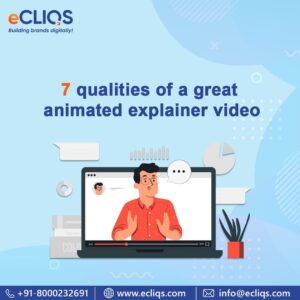
1. Straight to the point message
Your viewers decide if they are going to watch your full videos or not in just the first 8 seconds. Your animated explainer videos should focus on having a message that’s conveyed quickly.
Animated explainer videos are most effective when the creator utilises the time by connecting to the audience and grabbing their attention quickly.
2. Engaging Script
To make animated explainer videos work, the visuals need to be clear but more importantly, the audio must be easy to understand. The script of the animated video should be engaging. If the script is complex, the audio is not going to be easy to understand. So make sure your script is easy, engaging, conveying the right message,e, and fun. The consumer should enjoy watching your animated video.
3. Visually Appealing
With many brands taking a minimalist approach, the integration of animated explainer videos to their website and social media channels have become an important part of their campaigns.
Choosing good visuals along with elegant fonts along with the right colours is important. In addition, the visual should align with the message of the animated video.
4. Impactful voiceover and music
The aim of any animated explainer video is to explain a particular product or service. And that’s the reason why voiceover is important. The voiceover artist should have a clear and easy-to-understand voice. The narration should be straightforward and not fancy.
The pitch should make sense and should explain the product or service at the beginning and end of the animated video.
Choose the right music for your animated explainer video. Music helps in keeping the consumer engaged throughout the video. Keep in mind that the music should also align with the pitch and tone of the voiceover artist.
5. Relevance
Explainer videos should be relevant to the consumers. Make sure you analyse your target audience before starting to make animated explainer videos.
If you want your animated video to be relevant to your target audience, it should focus on their preferences and needs. While the script can be crafted by keeping the target audience in mind, it’s the animation that helps in connecting to the viewers and building relevance.
If the content is relevant to the consumer, it’s more likely that they will share it. If the animated explainer video is shared by the consumers with their friends and family, it will help in attracting more consumers and increase conversion.
6. A persuasive call to action
Marketing researchers often suggest that a good call to action makes a huge difference. A call to action makes for a perfect opportunity to increase conversions. An animated explainer video helps the consumer in understanding the product or service and adding a call to action in the video makes the user take further action. Make sure your call to action inspires the consumer to take the action that you want them to take.
7. Branding
Animated explainer videos succeed when they reflect the brand that made them. Be it creating an animated explainer video to demonstrate a product or service to your company’s board or using it to advertise products, animated videos should be carefully branded.
Brand guidelines should be strictly followed. An animated explainer video should meet the personality of the brand.
Final thoughts
By creating animated explainer videos that are fun and relevant, you can achieve your goals and deliver your message. These videos are effective and powerful. Try making shareable videos. People often prefer sharing good stuff with their friends and family. Keep it short, simple, and direct. Avoid being too fancy. A good voiceover artist with a clear voice and good narration skills can make your videos perform well.
References
- https://www.columnfivemedia.com/10-qualities-every-good-explainer-video-needs/
- https://www.wordstream.com/blog/ws/2014/03/13/explainer-videos
- https://www.promoshin.com/10-qualities-of-a-great-explainer-video/
- https://animationexplainers.com/what-makes-a-good-explainer-video/
- https://medium.com/@KaraEberle/6-qualities-of-an-outstanding-animated-explainer-video-cc6b8b3c1ae0
LinkedIn Ads – An effective Lead Generation Tool
For professionals and companies, LinkedIn has evolved as the biggest lead generation platform. With 810 million members (source: LinkedIn), LinkedIn is a platform where people invest time, unlike other platforms where people are just passing time.
With such a large user base, LinkedIn becomes the go-to platform for promotions. If you operate in the B2B space, there are high chances that your potential customers will be found on LinkedIn by running ads. With optimum market research, you can reach out to your potential customers and run a successful LinkedIn Ad campaign.
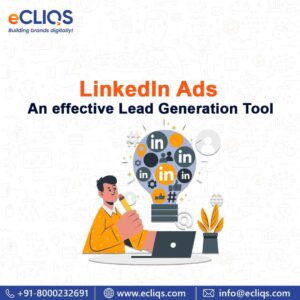
What are LinkedIn Ads?
LinkedIn Ads are paid marketing tools offered by the platform. It lets you run Ad campaigns in different formats. LinkedIn Ads help in:
- Website conversion
- Audience engagement
- Sales
- Brand awareness
- Lead generation
- Increasing website traffic
LinkedIn ads, with a wide variety of options, can help you target your customer no matter what kind of business you are into.
Types of LinkedIn Ads
To achieve specific ad goals, LinkedIn offers you several ad formats to choose from. These are:
- Message Ads
- Video Ads
- Carousel Ads
- Single Image Ads
- Event Ads
- Spotlight Ads
- Conversion Ads
- Text Ads
You can choose any format to start your LinkedIn Ad campaign. Every format has its compositions and benefits. Depending upon your budget and goals of your LinkedIn Ad campaign you can choose from Cost per click ads(CPC), cost per impression (CPI), Cost per send(CPS) models.
How to create Linkedin Ads?
You’ll need a LinkedIn account to get started. Signup and go through the beginner’s guide to get started with LinkedIn. Once you are done with it. You can start creating LinkedIn Ads for your business. Let’s have a look at the steps to create Linkedin Ads
- Set up a Campaign manager account
This is the platform where all your LinkedIn Ads-related activities take place. This includes setting up ad accounts, budget management, and running LinkedIn Ad campaigns.
- Decide your LinkedIn Ad objective
The type of action you want the user to take after seeing your LinkedIn Ads is your objective. Setting up an objective helps in deciding the best suitable format for your LinkedIn Ads.
- Target audience analysis
You can choose a location for your Ads and then you can filter your audience by company name, industry, job titles, personal interests, etc.
- Choosing your LinkedIn Ad format
Your ad objective will help you decide the right format for your ads. You can choose from the formats listed above. Each format has its benefits and capabilities. You can choose the format that aligns the best with your Linkedin Ad objective.
- Decide your budget
LinkedIn ads manager will provide you with a budget range. This range is based on your target audience and format. Ad managers also factor in the competition in your chosen target audience.
- Decide the right time
Once you are done with the setup of your LinkedIn Ad, you can choose the right time for it to run. You can decide the start and end of your LinkedIn Ad campaign or you can continuously run the campaign.
- Confirm and pay
Once you are done with the above steps, you can preview your ad. Once you are satisfied with the preview, you can make the payment and that’s it. Your LinkedIn Ad is ready to meet its audiences.
Final words
LinkedIn has proven to be one of the best platforms to connect with like-minded business-oriented people. You can connect with the right audience and brands. Once you’ve built the right LinkedIn Ad strategy, you will learn how powerful LinkedIn ads are.
Follow the above steps and build your ads the right way.
References
8 Tips to Increase Engagement and Followers on Facebook Page Organically
Engagement on Facebook has dropped by 20% since the beginning of 2017, as reported by BuzzSumo. Despite being the most popular Social media platform, this downfall can surely give sleepless nights to any social media marketer.
To tackle this constant decline in engagement and followers, one needs to build strong strategies. To help you with that, here are 5 tips to increase engagement and followers on Facebook pages.
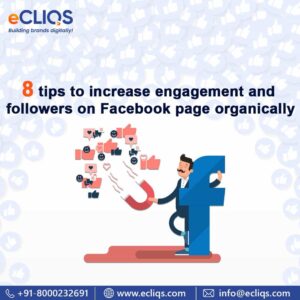
1. Mix up format of posts
Try out different post formats to check which of them is generating the maximum engagement. If images are not helping in boosting engagement, try videos. Similarly, try experimenting with posts.
This will help in growing Facebook engagement organically. It will keep your Facebook page up to date with fresh content. Track these posts to understand which format brings in the most engagement.
2. Create viral content
Creating viral content brings high traffic to your posts. Most popular Facebook pages focus on delivering viral content that not only increases engagement but also brings in new followers with every post. All of this is organic. Content can be a meme, video, animation, etc.
Your existing audience tags their friends on your viral content and shares it with their friends and followers. Sometimes, popular pages also share your viral content and you get exposure to a larger audience.
3. Use automation tools
Sometimes, it gets tough to post constantly on Facebook due to time constraints or busy schedules. And if you’re still a growing business, hiring a team might be a little expensive for you.
You can always opt for Social media automation tools. These tools help you schedule your post for upcoming days and events. They automatically get posted on your pre-decided time. If you have a social media team that manages all your activity, they can also use these automation tools as it makes it easier for them to post on different platforms at the same time.
4. Go live
Going live helps you interact with the audience directly. You can give insights into your upcoming products or services while going live. You can also get feedback for your products and discuss user experience. You can also demonstrate your existing services and products on Facebook Live.
Going live regularly helps in creating a strong engagement with your followers. And it also puts you high on the Facebook live map. The more the no. of people watching you live, the more chances are that you’ll be ranking high in Facebook live maps.
5. Partner with influencer
Influencer marketing has seen exponential growth in the last few years. Partnering with an influencer gives you access to a huge following that the influencer has. Audiences trust the influencer that they follow. So, when the influencer promotes your service and products, their audience gets convinced easily.
You can also run giveaways along with influencers which will further improve engagement. This not only increases traffic on your Facebook page, but it also increases traffic on websites as well.
6. Start a contest
This is one of the best ways to generate organic engagement and followers on your Facebook page. To keep the contest effective, keep your prize related to your brand. It’s best when you provide your product as a gift.
Encourage the users to like, share, and comment on the post. Ask users to post on timelines about the contest.
7. Tagging
Tagging helps in getting exposure to different audiences. When partnering with an influencer, ask the influencer to tag your page wherever possible. Comment on different posts related to your products and services.
When running a contest, ask the user to tag more people for higher chances of winning. This way you not only increase your engagement, but you get more people on board. Sometimes these tagged people become your audience.
8. Try user-generated content
UGC(user-generated content) is more than just a passing trend in Facebook. If users create content using your brand name, it shows that they trust you. It becomes a major signal to others. This
means more engagement and more organic reach. Some ways to do this is
- Get users to write reviews about your products.
- Start hashtags and ask your users to post content using your hashtags.
- Start a UGC contest and ask your audience to compete to win exciting prizes.
Final words
Facebook is a great platform for engagement. With a high user base and the right strategies, you can build exceptional engagement and popularise your Facebook page. Run paid ads and create high-quality content. Post viral content like memes so that the audience can relate to it and share it. Use automation tools to be on time when it comes to posting. Hop-in influencers and build a strong strategy to increase engagement and followers on Facebook.
References
- https://buffer.com/library/increase-facebook-page-engagement/amp/
- https://www.postplanner.com/boost-facebook-engagement-infographic/
- https://www.revlocal.com/resources/library/blog/how-to-get-more-facebook-followers-and-improve-engagement
- https://www.lyfemarketing.com/blog/how-to-increase-facebook-engagement/
- https://www.oberlo.in/blog/facebook-followers
7 Elements that must be Optimized in On-Page SEO
With over 1.5 billion existing websites and more than 2 million articles being posted every day, ranking high in SERPs has become more difficult than ever. Most of the good websites use SEO for better rankings and high traffic. These stats are enough to understand that with so much content available, it has become imperative for marketers to put-in extra effort to get their content noticed.
After crafting a piece of high-quality compelling content, you need to optimise it. Content optimization isn’t just using the right keywords, it’s more than that. On-Page SEO elements help in boosting visibility on search engines.
Why is On-Page SEO important?
On-page SEO helps in understanding the search engines better. It also helps in identifying whether the content is relevant to the search query or not.
Search engines are now better at understanding search queries. New and improved algorithms help search engines deliver results that meet users’ intent.
Adapting to these advancements is necessary. You can do that by making sure all your on-page elements are in place.
Here is a list of 7 elements that you should cover in on-page SEO.
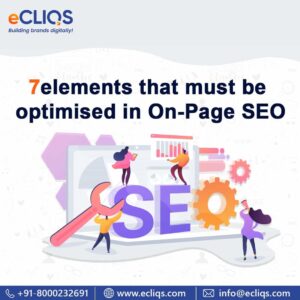
1. Title tag
The title tag is one of the crucial elements of on-page SEO. It exists in the head section of a webpage. Adding your target keywords to title tags gives a cue or context about the content. Try to keep the keywords as close as possible to the beginning of the title tag. Also it has to be done in the right way so that it makes sense
2. Keywords
Keywords are the first thing that comes to the minds of most people when they talk about SEO. Keywords are an important aspect of SEO. Using it correctly harnesses its power to the fullest. Use keywords in the right quantity neither too less nor too many as keyword stuffing is penalised by search engines
3. H1 tags
H1 tags or heading 1 tag indicates the primary heading of the web page. It is one of the major ranking factors in search engine optimization. It is usually the most visually notable part of content. H1 tags are generally the title of your blog. It should describe the content precisely. The length of the H1 tag should be between 20 to 70 characters; going beyond this will dilute its influence.
4. Page URL
Page URL is another element that gets noticed first. While deciding which URL should be used, keep in mind the main keywords of the content. Try including keywords in URLs and separate them by hyphens.
URLs should be concise. Keep your URLs neat, keyword-focused, and descriptive. It will help users in understanding your content.
5. Meta descriptions
Meta descriptions are considered an important element of On-Page SEO. Writing a clear, short, and compelling meta description that reflects your content sufficiently can help in improving click-through rates and drive more traffic.
The length of meta descriptions should also be checked. Google can show meta descriptions of up to 320 characters, but it’s best to keep them between 70 to 160 characters.
6. Image optimization
Images make a website look more appealing and when properly optimized, they make for valuable SEO assets. Image optimization gives your content an additional opportunity to rank high and enhances the user experience. Add relevant images to your content so that it helps the user understand your content better.
Use the title keyword in the image title, alt tag, and filename of the image.
7. Internal and external links building
For On-page SEO, internal and external links in content are important. These links signal Google that the website is resourceful and citation-worthy.
Adding internal links not only helps the user find relevant content within your website but also helps in keeping search engine bots on your site for a longer duration.
Linking three to four reputable sites boosts your trust signal which again helps search engines rank.
Conclusion
On-page SEO is one of the major aspects of better rankings in SERPs. On-page SEO enhances the website structurally including design, mobile-friendliness, images, links, page size, etc. On-page SEO improves page speed and user experience. Including all the above points will not only boost your ranks in SERPs, but will also improve the credibility and reliability of your website.
References
- https://www.brafton.com/blog/creation/why-content-is-important-for-seo-2018-edition/
- https://tekeye.uk/computing/how-many-websites-are-there
- https://moz.com/google-algorithm-change
- https://www.ilfusion.com/checklist-7-key-on-page-seo-elements-for-better-content-optimization
- https://terakeet.com/blog/on-page-seo/
- https://backlinko.com/on-page-seo
- https://www.searchenginejournal.com/on-page-seo/essential-factors/
10 Ways to Drive Traffic on a Website
Many businesses fail to come up with new and innovative techniques to increase web traffic. Every entrepreneur wants more and more traffic on their website. More traffic means more business. They invest their precious time and effort painstakingly setting up the website. Still struggling to drive traffic on their website.
So, what should they do to increase their web traffic?
In this post, we’ll discuss 10 ultimate ways which will help in skyrocketing the traffic on your website.
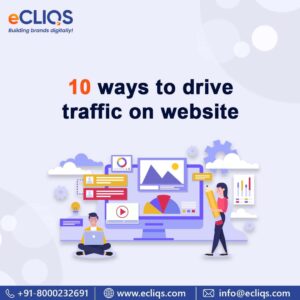
1. Running an Advertisement
The first and the obvious way is running an advertisement to promote your website. Ads are an excellent way to attract people to your website. They help in building brands and getting your website noticed. There are various kinds of Online ads available like Google ads, Facebook Ads, Instagram Ads, Linkedin Ads and more. Choose the platform where your target audience are and create an ad keeping the goal as website traffic and your website traffic will certainly increase
2. Promote website on social media
While producing great content is important, it’s not enough. In this age, you need to promote your content to reach the audience. Create social media accounts for your business and try to tell your audience what you’re doing. Follow the latest trends to be on top of social media. Social Media Marketing helps businesses in creating brand awareness which further helps in driving traffic to the website.
3. Optimise Content according to SEO
When it comes to websites, SEO is one of the most important tools for increasing traffic. Conduct proper keyword research and make your website SEO optimised. Write keyword-rich meta descriptions. Reach out to a professional digital marketing agency for SEO as it requires technical knowledge where an expert can really help.
4. Guest posts
People think that guest posts are a thing of the past. But that’s not true. You can write a guest post for others or you can make other popular bloggers write a guest post for you. Linking both will allow you to have a share of the audience from the guests’ audience. It helps in getting more referral links and more backlinks. It also increases brand awareness.
5. Conduct a Podcast
In the US, 42% of the population have listened to a podcast (source:podcastinsights).
In recent times, the podcast has become one of the hottest marketing channels. People prefer podcasts as they can listen to them while doing other works. Appearing as a guest on a podcast and telling the listeners about your website can help in getting new visitors.
6. Host competition and giveaways
Hosting a competition and giveaways regularly makes the people visit your website and return. When visitors see a prize, it helps in convincing them to interact with your website.
7. Engage in email marketing
Email marketing helps in drawing visitors regularly to your website. Build a list of emails and send a personalized e-mail that highlights your business and gives the recipient a reason to visit your website.
Email marketing helps in building trust and increasing brand awareness. It helps in building an authentic connection with the recipient. Include a call to action button that directly sends the recipient to your website.
8. Influencer marketing
Influencers have a large audience and when you get an influencer to market your website, it puts your website in front of their audience. You can provide coupons to the audience of the influencer which further will help in convincing them to visit the website.
9. Conduct webinars and events
Webinars and events are a simple yet effective way of informing people about your business. Conducting webinars and showcasing your business there increases brand awareness. Choose a relevant topic for the webinar and send invites. Get some infographics ready for promoting the upcoming webinars and events.
When a user is interested in attending the webinar, he or she is likely to visit your website to know more about you
10. Creating a quality infographic
Quality infographics have high engagement. Creating high-quality infographics and sharing them across different platforms creates brand awareness which helps in diverting more traffic to the website. While creating the infographics, one should focus on creating something which people would like to share. If your audience shares your infographics, you get a chance to attract a fresh audience.
Final words
There are a lot of ways to increase traffic on your website like social media promotions, SEO, email marketing, etc. Doing these will help increase web traffic to a large extent. The most effective way depends on your brand and your target audience.
For all these activities it would be better if you can bring a professional digital marketing company on board. Their expert team would carry out each of these tasks in the best possible way to get desirable results. e-Cliqs Consulting is one such digital marketing company who is result-oriented and customer centric in approach
References
- https://www.oberlo.in/blog/website-traffic
- https://www.forbes.com/sites/robertadams/2017/04/10/23-proven-ways-to-drive-traffic-to-your-website/?sh=2b0f54402654
- https://madisonmilesmedia.com/blog/10-proven-ways-to-increase-website-traffic/
- https://www.wordstream.com/blog/ws/2014/08/14/increase-traffic-to-my-website
- https://backlinko.com/increase-website-traffic
- https://blog.hubspot.com/marketing/increase-website-traffic
- https://ahrefs.com/blog/how-to-drive-traffic-to-your-website/
- https://www.podcastinsights.com/podcast-statistics/
- https://www.shopify.in/blog/how-to-increase-website-traffic
Email Marketing – The Ultimate Guide
Emails, despite being the oldest form of digital communication, still reign the top spot when it comes to usage. It is still used to build authentic connections with customers to keep the business alive.
With a user base of over 4 billion people (source: Statistica), emails dominate the other marketing channels. This user base is constantly increasing every year.
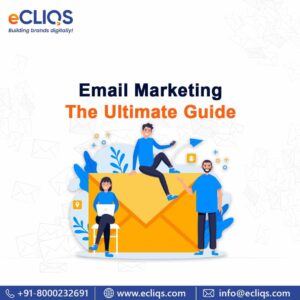
What is Email Marketing?
Email marketing is the process of targeting and communicating with leads and customers through emails. With an ROI of $38 on every dollar spent (source:emailmonday), email marketing deserves to be a part of every digital marketing campaign. It still beats social media marketing and affiliate marketing and according to smartinsights, email marketing is the most effective marketing channel.
So, Email marketing is an important part of digital marketing campaigns. But the problem is, most people don’t do it the right way which reduces the conversion rate.
To help you in building a successful email marketing campaign, here is a complete guide to email marketing covering everything you need to know about email marketing. Let’s get started.
Why email marketing?
Despite the rapid rise of social media, emails remain one of the most effective ways to generate leads and build loyalty with customers. People who purchased products that are marketed through emails spend 138% more(source:optinmonster).
Your social media account might get deleted for some reason but when it comes to emails, you own your list and no one can take it from you.
How email marketing helps businesses?
Emails increase brand recognition. Including your logo in your emails keeps your business in front of the audience constantly. A customized email with unique and elegant color palettes, logos, and brand graphic help to create a good image of your business in the minds of your potential customers and leads.
Email marketing helps businesses to connect to a larger target market and increase credibility. Consistent emails help in building trust with your customer and these customers who trust you, refer your products to their friends and family.
Sending email newsletters to your clients keeps them updated with what’s new in your business. It educates them about what you are working on and how your business is performing.
How does email marketing work?
A successful Email marketing campaign requires three elements. These are:
1. An email list
You need to have a list of active emails. This is a database of email contacts who expressed interest in your products and in receiving marketing communications from your business. You can generate an email list in many ways. One of the most popular ways is to offer a coupon in exchange for an email.
2. An Email Service Provider(ESP)
It is a software that helps you manage your email list and generate automated emails. It helps you send emails automatically, triggered by the audience’s behaviors which enables you to personalize each interaction with them and increase engagement.
3. Defined goals
The goals of the email marketing campaigns need to be defined and the entire email marketing campaign should be built around it. You can use an email marketing campaign to:
- Drive sales
- Generate leads
- Engage customers
- Increase brand awareness
Once you align these elements, you can start working on the email marketing campaign.
Important terminologies
Here is a comprehensive list of email marketing terminologies that will help you in understanding the ESP and bounce rate report.
- Acceptance rate
It is the proportion of emails that are accepted by the recipient’s ESP.
- Acceptable spam rate
Without impacting the sender’s reputation, the rate at which the email sending server is reported spam.
- Bounce rate
Rate of emails that were undelivered to intended recipients.
- Blacklist
The list of IPs that have been reported spam by SDS(Spam Detecting System).
- Bulk mailing
Sending emails containing similar content to multiple recipients at the same time.
- CAN-SPAM
It is the abbreviation of “Controlling the Assault of Non- Solicited Pornography and Marketing Act of 2003”. It regulates commercial emails by establishing requirements and standards for commercial messages. It gives recipients the right to opt-out of emails and also lays out the penalties for disregarding them.
- Clicks Per Delivered
Once delivered to recipients, emails that receive clicks define the click per delivered rate.
- Clicks per Open
It is the percentage of emails that become opened/viewed after getting a click.
- Cost per Thousand (CPT)
It is the cost that an email marketer bears from every 1000 email addresses on a rental list
- Conversion Rate
The number of recipients or subscribers who respond to your promotion or call is analyzed by conversion rate.
- Dedicated IP
Dedicated IP is the exact IP address which is used to send emails to subscribers or potential clients.
- Double Opt-In
This is the best way to build a subscribers list. It helps you to collect emails by asking interested parties to confirm their subscription by clicking on a link sent to their email. Doing so helps you only collect emails from people who are interested in the subject. It subsequently helps in lowering the probability of a high bounce rate.
- Email filter
It helps in blocking emails based on the subject line, sender, or content.
- Email Sponsorships
It involves purchasing advertising space in a newsletter or sponsoring a particular article or a series of articles to promote your service or product.
- False-positive
When a legitimate permission-based email is marked as spam or erroneously filtered.
- Hard Bounce
It refers to the permanent failure of an email to be delivered to the recipient.
- Honey Pot
An email address conspicuously planted by organizations that fight spammers.
- Retention List/Home List
When subscribers join the list willingly because they are interested in the subject of the matter, your product or service, they are added to the retention list.
- HTML Email
You can design custom and creative emails by using HTML Emails. You get the option of playing around with the design as much as you want. Optimized emails generally get a much better reception when compared to generic emails.
- IP Warm-up
Slowly increasing the number of emails sent from a single IP.
- Landing Page
A dedicated page to capturing leads from a linked email.
- Authentication Levels
Identifying whether a sender’s identity is legitimate
- List Segmentation
Segmenting subscribers that are most relevant to send your campaign emails.
- Open Rate
The number of emails opened by the recipients.
- Opt-In/Subscribe
When a user chooses to receive email communication from a website.
- Opt-Out/Unsubscribe
This allows subscribers to opt-out from receiving emails from a sender anytime they want.
- Physical Address
Address of the company or organization sending the email.
- Read or Open Length
Time spent by the recipient to close the email after opening it. Longer read length means the recipient finds the information provided in the mail interesting.
- Sender Score
It is a score out of 100 that defines the reputation of an IP.
- Single Opt-In
When subscribers opt to receive email communication from the sender, without confirming their email addresses.
- Spam Cop
It is a paid service that plants bait emails around the internet to identify people who harvest them and mark their addresses as spam.
- Spam Trap
Consists of an email address that was once usable but is no longer valid.
- Sender Policy Framework
A DNS record that identifies on whose behalf a domain or IP sends an email.
- Whitelist
Opposite of a blacklist, contains emails that have been approved to send messages to that recipient.
Final words
Running a successful email marketing campaign can deliver exceptional results while being affordable. Email marketing campaigns not only widen your network and reach, but also help in building a good relationship with your customer. Email marketing also helps in building brand awareness. Make sure your email marketing campaign has all the three elements and the above-mentioned terminologies will help you in executing the email marketing campaign in a better way.
References
Facebook Ads – The Complete Guide
Facebook has been around for a while, and it has been one of the most popular social media platforms. In the US, 70% of Facebook users log in daily (source: wordstream.com). So running Facebook ads is one exceptional way to boost business. These ad campaigns are easy to track with an instant flux of traffic.
It is one of the affordable ways to run ads, popularize your brand and increase sales. Spending a little amount can give you significant results.
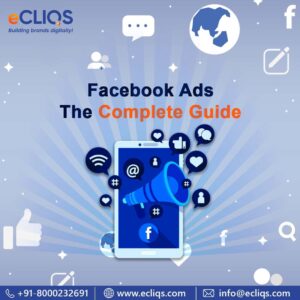
Why Facebook ads?
Facebook offers a lot of customization options for your ads. You get creative control over your ads. With more than 2.6 million active users monthly (source:Oberlo.com), a good no. of your customers are using Facebook daily. Facebook gives you extensive target-ranging options to choose from depending upon the demographic, interests, gender, life events, etc.
In addition to that, Facebook tools can help you promote any kind of content that is suitable for your business. You can promote text posts, videos, links to your website, events, offers, etc. using Facebook ads.
Running a high converting Ad campaign on Facebook isn’t as tough as it sounds. With proper guidance, you can easily run successful Facebook ads for your business.
Here is a complete guide on Facebook ads where you will get to learn everything about Facebook Ads and how to run them.
Building strategy
Before you browse the Facebook ad manager, sit back and develop a strategy for the ad. Without a proper strategy, you’ll be dazzled by the no. of options Facebook ad manager gives you and you’ll end up creating an ad that isn’t converting. This will result in a failed campaign.
Try to analyze the product or service that you are promoting, Target audience, use of the product, pain points, objections, and many more things.
Decide your objective
Once you are done with the above analysis, decide what your objective is for running these ads. Facebook optimizes ad placements depending on your objective. So it’s important to choose an objective.
You can decide among the following objectives:
- Brand awareness
- Engagement
- Traffic
- Reach
- Video views
- App installs
- Messages
- Lead generation
- Catalog sales
- Store visits
- Conversions
Target audience
Start by analyzing who you want to target. You get a plethora of options to target a specific audience. You can target custom audiences, wherein the ads are visible to particular users from your mail list, or who have taken actions on your Facebook or Instagram business profiles.
There is an option of targeting lookalike audiences, who have similar interests as your custom audience. You can target based on demographics, locations, interest, connections, etc.
Choose the spots for your ads
You will be choosing what apps, devices, placements you want your ads to be displayed on. You choose one or both among mobile and desktop for your ads to be shown on.
Set your budget
Next, you’ll be able to schedule your ads and choose the right budget for your Facebook ads. You have the option for lifetime budget, daily budget, you can run ads indefinitely or schedule a start and end for them as well. You can even choose the timings for your Facebook ad to be displayed.
Choose your Facebook Ad format
Some incredible formats to run your Facebook ads are:
- Image ads
- Video ads
- Canvas ads
- Collection ads
All types of formats have their unique benefits but it’s the videos ads and Carousel ads that have the highest engagement and CTRs.
Focus on details
At the bottom of the creative section, you get the option of adding small details that are easy to miss. You can put copies, CTA, URL descriptions there. Take advantage of every single one of these. Using rights copies at the right place will bring a huge difference in Facebook ads performance.
Monitor you ads
Once you have started with your Facebook ads, carefully monitor their performance. Some Facebook ads get high CPC when frequency gets high, others get high CPC at the beginning itself. And sometimes the ad might not be as successful as you’d expect.
Facebook ads manager gives you access to watch CPC, frequency, relevance scores, etc. These are crucial metrics and you’ll have to keep a check on them.
Split testing
Facebook has its split testing tool and while it’s not perfect, it’s pretty good. It works well when you want to split test your Facebook ads strategies. You can rely on it but you’ll have to manually test the creative aspects of your Facebook ad.
Final words
With the number of customization options, Facebook ads can be your go-to thing to promote your business. Once you are familiar with the system, you’ll be able to make it work to your advantage. As long as you have a plan, Facebook ad creation will be an easy thing.
Still, if you find it tough you can always visit Ecliqs.com for getting professional help creating an exceptional Facebook Ad campaign. Our experienced team will help you in customizing your ads the right way.
References
- https://sixads.net/blog/facebook-advertising-most-valuable-tips-for-beginners/
- https://www.oberlo.com/blog/the-beginners-guide-to-facebook-advertising
- https://adespresso.com/guides/facebook-ads-beginner/setting-up-your-facebook-ads-account/
- https://buffer.com/library/facebook-ads-guide/amp/
- https://disruptiveadvertising.com/social-media/facebook-ads-guide/
- https://www.wordstream.com/blog/ws/2016/06/29/best-facebook-ads
- https://neilpatel.com/blog/unbeatable-facebook-ad-campaign/?lang_geo=us&
- https://www.leadguru.co.uk/facebook-advertising-tips/
- https://www.webfx.com/blog/marketing/amp-up-campaigns-personalized-marketing-infographic/
